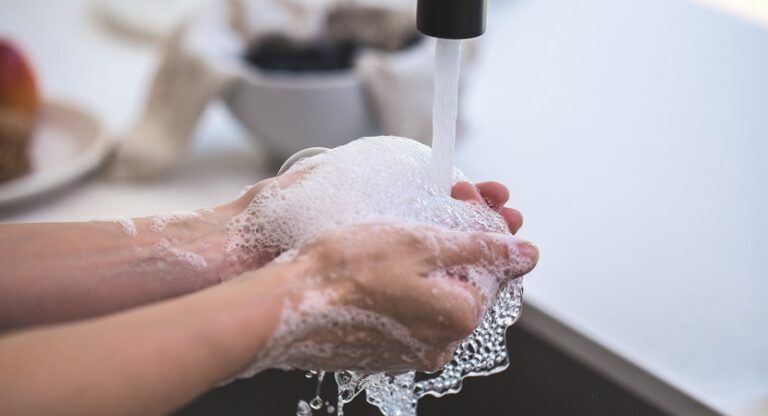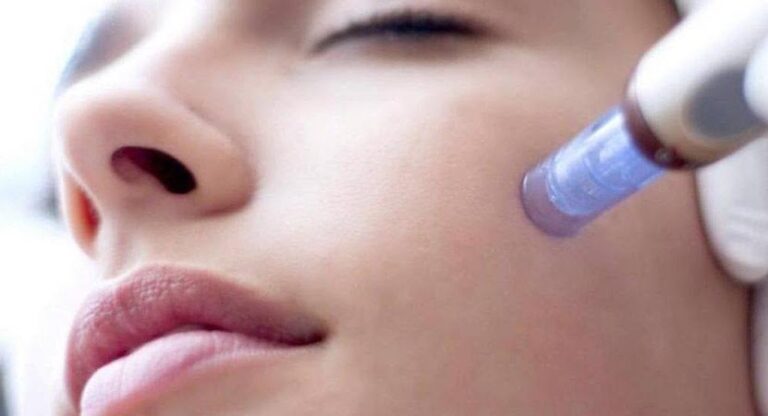Why is it that a bright white smile is perceived as one of the most eye-catching features that a human being can exhibit? Perhaps Hollywood and the mass media are to blame for our united obsession with having porcelain-white teeth; something that is very difficult to attain without the help of some harsh chemical compounds. So what is natural teeth whitening really all about?
In this article we discuss the following:
- What is Natural Teeth Whitening?
- Reasons to Whiten Teeth Naturally
- Chemicals to Avoid in Teeth Whiteners
- DIY: How to Whiten Your Teeth at Home
- The Best Natural Teeth Whitening Brands
- The Bottom Line
What is Natural Teeth Whitening?

If you take a moment to consider how often you actually use your teeth, it becomes less of a shock that they would turn a bit yellow and tired-looking over time. We use them to eat, drink, talk, smile — we even use them to rip things open.
Constant contact creates an all round fickle environment for one’s teeth, making it difficult for them to thrive without some help. Most of us brush our teeth religiously, at least twice a day or once after meals. Brushing is unfortunately not enough to make teeth keep their bright white hue, as even vigorous brushing can bring decay to tooth enamel.
Dr. Nisha Garg, an Orthodontist practicing in New York City, notes that “there are two types of tooth stains: Intrinsic tooth stains form at a very early age due to genetic or developmental reasons. Extrinsic stains are more common, and form overtime from external factors such as food, red wine or coffee. Natural remedies can go a long way to help reduce extrinsic staining, and keep your teeth looking white and fresh.”
Yellowing teeth are simply a byproduct of worn down enamel. We are born with a strong layer of enamel over each of our pearly whites, but we put our enamel in harm’s way daily, even through seemingly harmless activities such as sipping a cup of tea.
As the enamel of the tooth wears away, a yellow hue begins to develop, often creating an uneven looking gradient effect throughout one’s smile. Mild yellowing is hardly noticeable to most individuals; but being the wearer can sometimes evoke strong self-consciousness that isn’t preferable to carry though life.
Like any widespread fad, the oral-care industries hopped on early on and brought out multiple teeth whitening products with the ability to dull the inevitable yellowing quite significantly. Unsurprisingly, the only way to whiten teeth fast is to coat them in potent chemicals that have a bleaching effect on the worn out enamel.
It didn’t take long for health-conscious individuals to start questioning the formulas being sold off as whitening agents. Further investigation into these ‘bleaches’ lead to some concerning results, with potential side effects that simply aren’t worth having a slightly whiter smile.
A demand for natural teeth whitening was born and is now one of the most popular pastimes of image-conscious people who make whitening a daily practice to ensure results.
There are many teeth whitening methods that can be achieved naturally without the harmful chemicals and potential health risks. Natural teeth whitening makes use of botanical and Earth derived substances that have the ability to influence the shade of teeth gradually and over time.
You might have heard of charcoal teeth whitening; a craze that emerged in the last decade whereby people have found great success in using activated charcoal as a whitening agent on teeth. Activated charcoal is a substance used widely in the health and wellness industries, in both the inside and outside of the body.
Another popular natural teeth whitening solution is using baking soda for teeth. We’ll give more insight into this effective method a little later — read on!
Reasons to Whiten Teeth Naturally
You don’t have to dodge chemical products for the rest of your life in your goal toward whiter teeth–there are other options. Those with suitable finances may opt to have their teeth capped with permanent veneers; these will stay gleaming white until you utter your last words.
Others might schedule regular teeth whitening sessions with their local oral hygienist, however these institutions rarely offer any natural whitening options and make use of the same chemicals found in the store-bought products — only in much higher concentrations!
Since the aforementioned whitening methods are not financially viable for the average person, at home teeth whitening becomes the next best thing. This is where the threat that is store-bought, oral chemicals finds their way into our happy homes.
But surely since you’re spitting the product out after use, it’s got to be less harmful, right? Wrong.
Few people are aware of the fact that one of the most direct routes into one’s bloodstream is from underneath the tongue. This is where our salvia ducts are situated and they have the ability to both secrete and absorb. This is why a lot of dissolvable vitamins and medicinal oils are held under the tongue when taken.
Each day, you brush your teeth likely oblivious to the fact that the ingredients in your toothpaste are being quickly absorbed by your body. This is why natural toothpastes also saw a boom in popularity over the recent decade, with more and more people acknowledging the risks of absorbing too much fluoride on a daily basis.
When you whiten your teeth chemically, those chemicals are pulled into your bloodstream within seconds.
Opting to use natural teeth whitening methods is not only better for your body, it’s better for your bank account as well. It’s important to remember that teeth whitening is not something you achieve and then abandon with ever-lasting results.
Teeth whitening is an eternal process; you’ll need to adopt it as a daily or weekly ritual for as long as you’d like your teeth to remain white. Stop your whitening regime, and your teeth will revert right back to yellow within the weeks to come.
Chemical teeth whitening products are seen as an ‘elite’ items within the self-care market. They are priced accordingly and often become an added monthly expense that can cost more than one’s weekly groceries.
When you’re whitening your teeth with abundant, Earth-derived substances such as charcoal, coconut oil, or fruits, the costs are less exorbitant and feel more like simply an added item to one’s weekly grocery batch. The difference is tangible!
One of our biggest motivations for natural teeth whitening is to save the Earth itself. The oral-care industry is one of the biggest contributors to plastic waste on the planet, with millions of tons of discarded toothpaste tubes, toothbrushes and floss boxes contaminating our land and seas.
The fewer dental products we buy from big brand manufacturers, the better. There is a big difference between purchasing hundreds of single-use teeth whitening solutions packaged in individual syringes and purchasing one giant glass jar of coconut oil every few months. The one favors profits, the other favors the planet.
Some teeth whitening products are sold in the form of strips that simply peel on and off of one’s smile. These too have to be discarded after use, with no option of recycling and thousands of years between them and decomposition.
Chemicals to Avoid in Teeth Whiteners
As a golden rule when it comes to things you put both onto and into your body, it’s usually best to avoid all ingredients that you aren’t able to pronounce. If you were one to whiten teeth at home in the past, you’ve likely got a cabinet of unrecognizable ingredients that pose certain risks to your health over long term exposure.
The oral-hygiene industries have become extremely creative with their products, and there are currently hundreds of questionable chemicals being used to make teeth cleaning and whitening formulas. Regulations are in place worldwide, to an extent; it is difficult for lawmakers to monitor everything that goes into the production processes as the side effects of some of these chemicals are not yet even known by scientists.
The chemicals that we do currently know of, and should avoid, are as follows:
Polyethylene Glycol
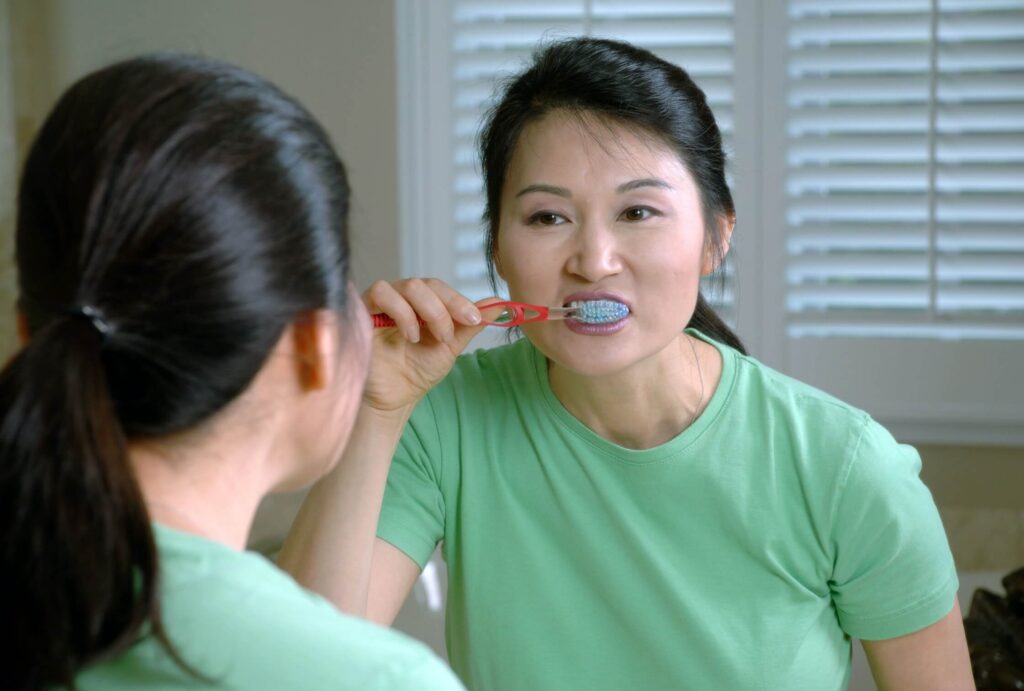
Polyethylene glycol is a chemical that is usually found in most medicinal laxatives. It’s ‘stripping’ effect on the body make it a suitable agent for teeth whitening as it has the ability to strip stains from existing teeth.
Albeit powerful, this chemical is classed as a carcinogenic, and when ingested repeatedly over time (even in small quantities) can cause extreme irritation to the body’s systems and internal walls.
Ammonium Hydroxide
Ammonium hydroxide is found in just about every industrial grade floor and surface cleaner on the market. It’s a potent chemical known for its ability to break down grime; so potent that it can even clean between the cracks of cement and bricks.
It goes without saying that ammonium hydroxide is probably not something you want to be ingesting on a daily basis. It has been linked to internal burns, gastrointestinal malfunction and crippling respiratory issues.
Silica
Silica is an ingredient found in all self-proclaimed whitening toothpastes. It’s actually a form of sand, and relatively harmless when used for it’s natural Earth-given purpose: to filter water and to lay on at the beach.
When used in the human mouth, however, things are far less beneficial.
The silica sand is rubbed all over one’s teeth, coming into repeated contact with the enamel. Over time, silica will strip all of your teeth of their natural enamel, while the co-existing chemicals in the paste work to bleach the exposed, enamel-less teeth into one color. This gives the illusion of new, revitalized teeth when in reality you’ve lost your protective layer entirely.
Sodium Hydroxide
As more chemical ingredients get uncovered and banned by regulating authorities, manufacturers find new chemicals to use in their place.
Sodium hydroxide is a relatively new toxin within the oral-care world. Some argue that whomever looked at drain cleaner and thought, ‘we should put that into our mouths’, must have been a madman.
Sodium hydroxide is the very dangerous corrosive agent that eats through drain blockages and even rust. It’s now an active ingredient in most teeth whitening formulas, working to corrode the outer layer of the tooth so that the bleach has something to stick to.
Sodium hydroxide is very harmful when ingested, often resulting in internal burns and gastrointestinal problems.
Fluoride
Fluoride might occur naturally in fruits and vegetables, but the compound itself is of chemical classification when harnessed and used as a concentrate.
Chemical fluoride, like the type found in almost all store-bought teeth whitening products, has been linked to many questionable side effects in the last decade. There are big movements of people who protest governments adding fluoride to city tap water, claiming that the fluoride has a pacifying effect on the human brain and makes people lethargic and easily influenceable.
Fluoride has a harmful effect on the pineal gland near the front of the brain, causing it to shrink and decay over time.
DIY: How to Whiten Your Teeth at Home
If you’re wondering how to whiten teeth at home, this is everything you need to know. We’ve been doing it for years, and recommend each individual embarking on a natural teeth whitening journey try each of the following methods for themselves before choosing the one that personally works best and sticking with it.
Always bear in mind that natural whitening agents are working safely, gently, and gradually. You won’t see results as instantaneously as with chemical alternatives, but over time the effects will show for themselves.
Baking Soda Teeth Whitening
One of the most renowned natural whitening agents in the world is some good old baking soda. Most people have this product in the back of their pantry already and are surprised to learn of this item’s powerful ‘stripping’ abilities. As Lesley Reynolds, co-founder of Harley Street Skin Clinic, notes “baking soda has organic whitening effects and that is why in industrial toothpaste, baking soda is a popular ingredient.”
The abrasive nature of baking soda gives it the ability to chip away at yellow decay, without harming the healthy parts of the enamel that are still intact.
Baking soda is a smart ingredient that is able to shift the human mouth from an acidic environment, into an alkaline one. Bacteria are unable to thrive in alkaline environments, making way for better oral health and less decay over time.
So, how to whiten teeth with baking soda ? The rule to remember with baking soda teeth whitening is 1:2. One part baking soda, two parts water.
Mix a teaspoon of baking soda with the relative two teaspoons of water, and form a thick paste. Brush with this paste once or twice a week, separately from your regular toothpaste. Amanda Napitu, Dental Writer at Dentaly, recommends you “use your finger or a soft bristled toothbrush to apply the homemade baking soda whitener, and don’t scrub too much. Because of baking soda’s abrasiveness, there’s a risk of damaging your tooth enamel if you use it too often or too vigorously.” Dr. Candy Sebold, DDS, adds “it is best not to let the baking soda sit on the teeth for more than two minutes in order to minimize damage to the enamel.”
It can take between 3 weeks to a month for noticeable results to reveal themselves.
Activated Charcoal Teeth Whitening
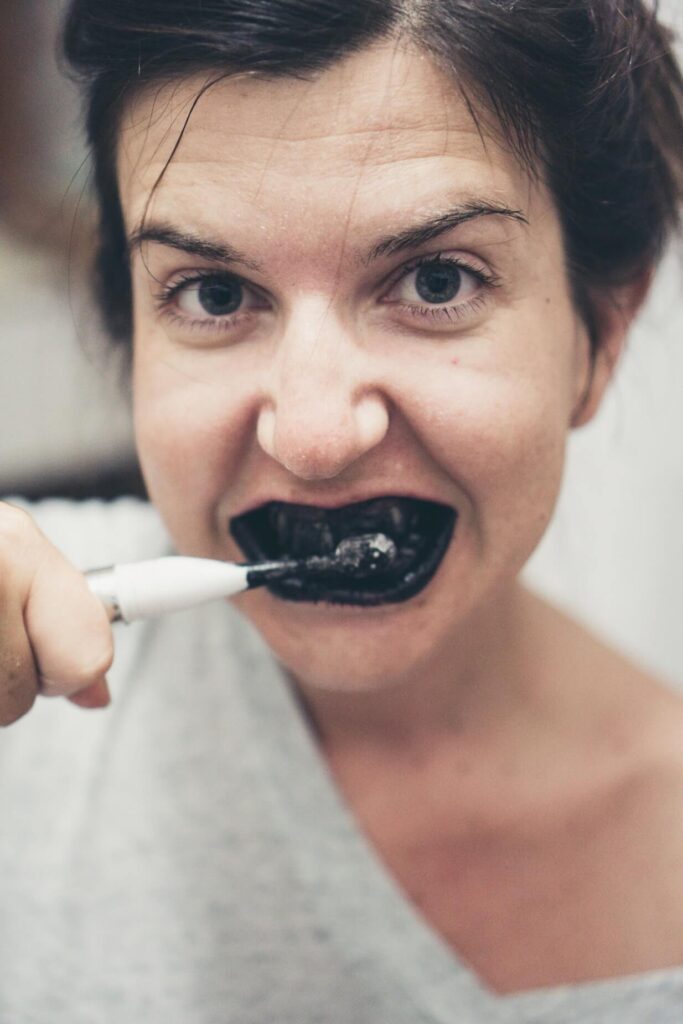
This method is perhaps the king of all DIY teeth whitening. It’s the method with the most visible results over a short period of time, and the health benefits that comes from ingesting trace amounts of activated charcoal are worth mentioning too.
Firstly, charcoal and activated charcoal are not the same thing. Activated charcoal is produced at a much higher temperature compared to regular charcoal, and this has a positive mineralizing effect on the carbon bearing material that is being burnt.
Activated charcoal is very porous and loves any opportunity to stick to a designated surface. It will cling to the teeth until it is washed out, and when it is the mineral compound takes stains, food particles and plaque with it.
You can purchase activated charcoal from most health and wellness stores. Some will sell them in individual capsule form that you’ll need to cut open before using. Why capsules? Well, charcoal is actually a powerful healing agent when digested.
Swallowing activated charcoal can counteract acids in the stomach; hospitals even prescribe it when patients come into the trauma ward having swallowed something toxic like bleach or soap.
Hydrogen Peroxide Teeth Whitening
Knowing how to whiten teeth with hydrogen peroxide is a one way ticket to consistently whiter teeth.
Hydrogen peroxide is a common household ingredient that occurs as a derivative from the compound that makes water. It’s usually blue in color and very dense.
When used on one’s teeth, hydrogen peroxide has lasting effects whereby teeth appear to be more white over time. It is safe to use in brief encounters; one would likely only experience problems should they try to hold it in their mouths for extensive periods of time.
To use hydrogen peroxide as a whitening agent, most people opt to swish a swig-full of the substance around their mouths for less than 30 seconds. One can also mix hydrogen peroxide with baking soda to form a double-teamed natural whitening agent.
Whatever you do, be sure to rinse well after use in order to prevent any of the substance from lingering and causing any long term damage to teeth enamel.
Oil Pulling Teeth Whitening
At the top of most lists of teeth whitening home remedies is the beloved and ancient practice of oil pulling.
Oil pulling as an Ayurvedic practice that was identified over 5000 years ago by the Ancient Indians known as the Rishis. They encouraged the daily practice of oil pulling first thing in the morning as a way of reducing the amount of toxins swallowed after overnight-build up. In addition to the oil pulling, they also recommended the practice of a morning tongue scrape, as well as drinking a glass of water from a copper cup.
Oil pulling is the art of filling one’s mouth with a heaped tablespoon of coconut oil and pulling it back and forth between your teeth for upward of 15 minutes. The motion of the oil through the mouth is a way of attaining better overall oral health. The oil removes bacteria build up, including the bacteria that would generally lead to yellowing.
Note: When you’re finished pulling, never spit the oil out into a sink. It will solidify in the pipes leading to plumbing issues down the line. Spit the oil into a trashcan or into toilet paper and flush it down instead.
Apple Cider Vinegar Teeth Whitening
Another option to whiten teeth naturally is to use some trusty apple cider vinegar. This potent concoction has been used as a powerful disinfectant throughout history.
The active ingredient is acetic acid and when it comes into contact with the ecosystem within the mouth, it kills off bacteria and removes plaque. As Dr. Shahrooz Yazdani, Founder of both Yazdani Family Dentistry and Costello Family Dentistry, recommends “rubbing a bit of apple cider vinegar on your teeth for a minute per day for a month can whiten one’s teeth. Doing so can, in fact, also help kill bad bacteria, and promote the growth of good bacteria through its properties of acetic acid, potassium, magnesium, probiotics, and enzymes.” Just be careful; apple cider vinegar can be harmful to tooth enamel when overexposed! Use sparingly and only once a day or every other day. Dr. Yazdani warns that if you decide to use this method, it’s critical to brush and rinse thoroughly after use since apple cider vinegar is so high in acid.
Fruit Teeth Whitening
The best way to prevent enamel erosion is to attain an overall prime environment in the mouth, where harmful bacteria struggles to survive.
Fruits and veggies have long been suggested as one of the most accessible forms of teeth whitening on a global scale. Vitamin C, B, and antioxidants are vital for oral hygiene, and they help to protect teeth and gums from cellular damage.
On a physical level, biting into crisp, fresh fruits and vegetables is an easy way to remove plaque build up from teeth. Plaque is almost a warning sign for yellowing; when left on the teeth, it will eventually impact the enamel.
“An apple a day keeps the doctor away” would have been better phrased as “An apple a day keeps the yellow away”. Studies have shown that individuals who eat apples on a regular basis have overall better oral health and less visible yellowing.
Toothpaste Whitening
Katrina Fadda, Owner of Bona Fide Skin Care, has an excellent tip about ho to use your whitening toothpaste for better results. Fadda says “one of the easiest ways to whiten teeth at home is to increase the results of your whitening toothpaste. Toothpaste might not be “natural” but we all have to use it, so make the most of it! Here’s how: once a day, gently brush your teeth with whitening toothpaste then leave it on (don’t rinse). Wait for one minute – you can swish it around like mouthwash and let it foam up. Then gently scrub your teeth again, concentrating on the front teeth. Rinse. After one week you should notice a difference. This is easy and doesn’t require any extra products, only an extra one minute a day.”
The Best Natural Teeth Whitening Brands
If you don’t trust yourself to measure out your at home ingredients, and would rather invest in some natural teeth whitening brands, these are the products you should look out for:
Kopari Coconut Oil Pullers
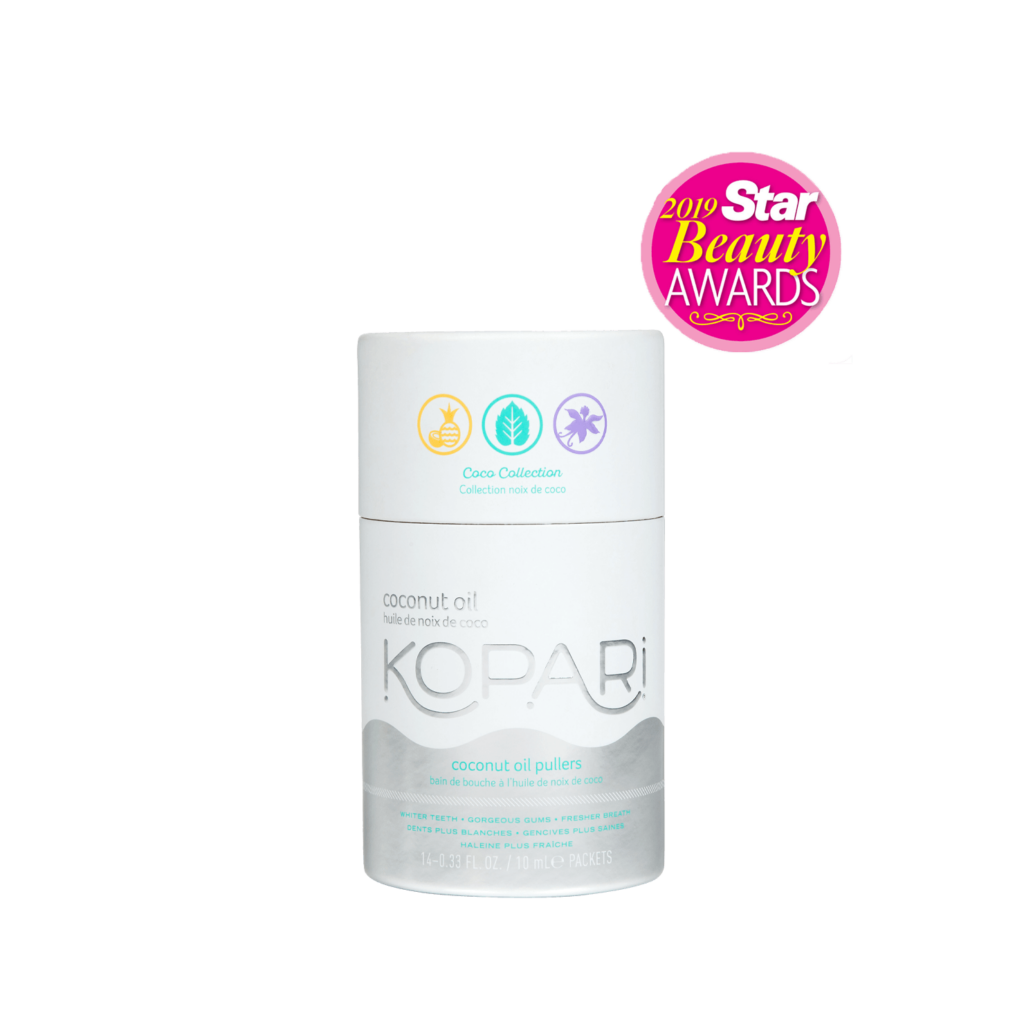
Measuring out the right dose of coconut oil each morning can be a deterrent for some people. While you can’t really get a dose of this harmless oil wrong, it’s nice to have some sort of guideline to work around.
Kopari have packed individual sachets of coconut oil to pull during your morning hygiene session. They start in a pack that will last you two weeks, and you can upgrade and extend your practice from there.
Kopari has also flavored their oil with mint and/or vanilla, which is a lot more exciting than most coconut oils where the natural flavor has been removed.
Carbon Coco Charcoal Teeth Whitening

We’ve personally loved Carbon Coco since the beginning of the teeth whitening natural movement. The product is wonderfully simple: 100% organic activated charcoal powder, with hints of bentonite clay and lemon extract.
One brush with this black powder each morning, before or after your regular brush with toothpaste, and you’ll be seeing a noticeable change in color within the second week.
Carbon Coco also has a range of charcoal infused toothpastes and whitening strips.
Burt’s Bees Activated Coconut Charcoal Powder
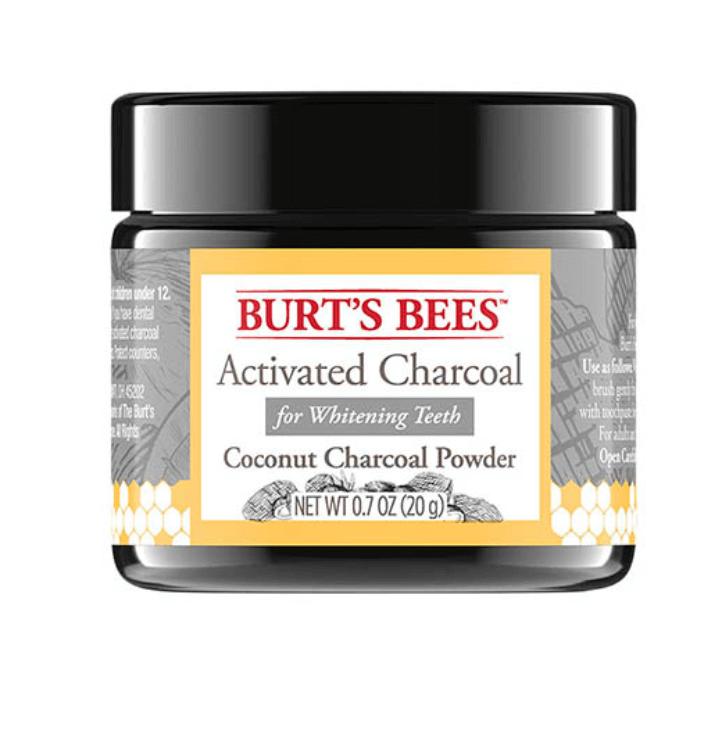
For an unbeatable teeth whitening at home combination, invest in Burt’s Bees charcoal powder and follow each brush with a session of pulling using hydrogen peroxide. This is reported to be one of the most rapid natural teeth whitening procedures out there!
Burt’s Bees charcoal is made by burning coconuts! The result is a nutrient dense charcoal with powerful whitening abilities. The product is totally free of parabens, preservatives, and microbeads.
Cali White Vegan B-12 Infused Teeth Whitening Toothpaste
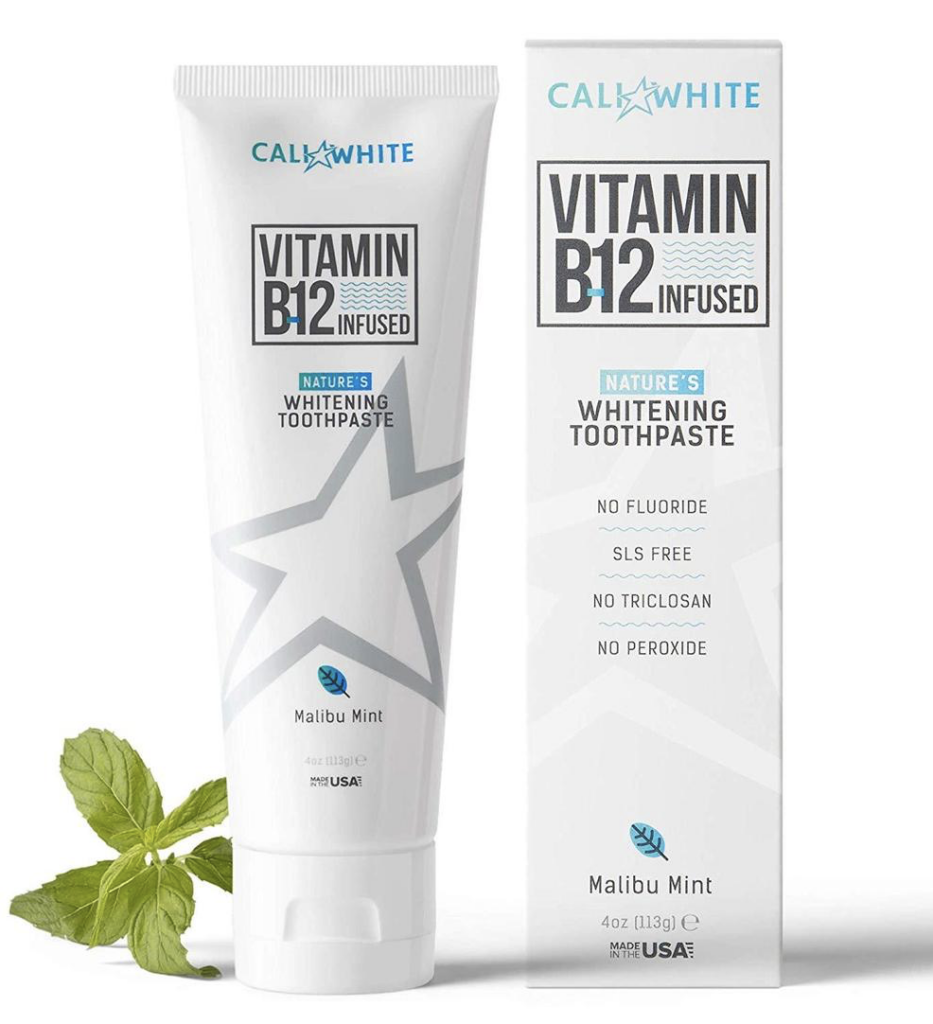
We’re convinced there isn’t a more beneficial toothpaste on the planet. Cali White dedicated years to perfecting their whitening, antibacterial formula using only plant-derived products.
The toothpaste is totally free of all harmful chemicals, including peroxides and fluorides. Their goal was to be the most effective natural tooth whitener and detoxifier on Earth, and we’d say they have exceeded expectations. Did we mention you also get your daily dose of B12 just from brushing?
This is definitely a brand to watch when it comes to natural teeth whitening, as well as general oral care.
The Bottom Line
When it comes to whitening teeth the natural way, we’ve concluded that the simplest formulas are usually the best.
Optimum results seem to be totally achievable for just about anyone though the use of basic household ingredients such as baking soda and coconut oil. Those looking for a more intense experience can opt to purchase a simple tub of activated charcoal and incorporate it into their daily brushing schedule.
We love the idea of incorporating many harmless teeth whitening practices into one’s daily self-care routine. For example, brushing with charcoal each morning, eating a crisp apple sometime during the day, and pulling with coconut oil at least every second evening before bed. A certain path to whiter teeth!
Remember: natural teeth whitening is a build up, not an overnight success. Give yourself at least a month before you make too harsh of a judgement. Keeping a visual log of your teeth is a great way to track progress; consider taking a photograph once every few days for reference.
if you liked this post please check out
Did You Enjoy This Article?
If you enjoyed this article, you might also like our articles discussing haircare and beauty such as Acne Patch for Pimples, Microneedling, and Top 18 Natural Shampoo and Conditioner.


